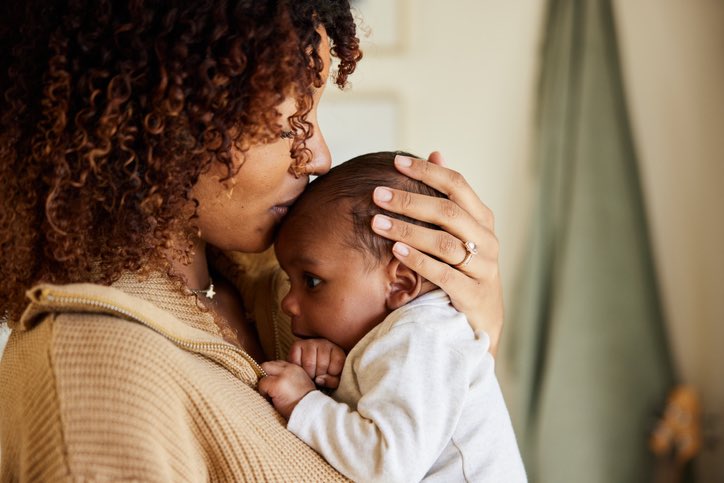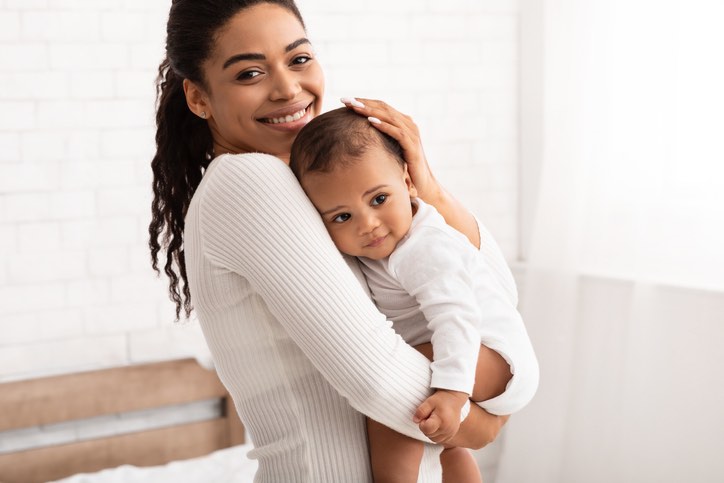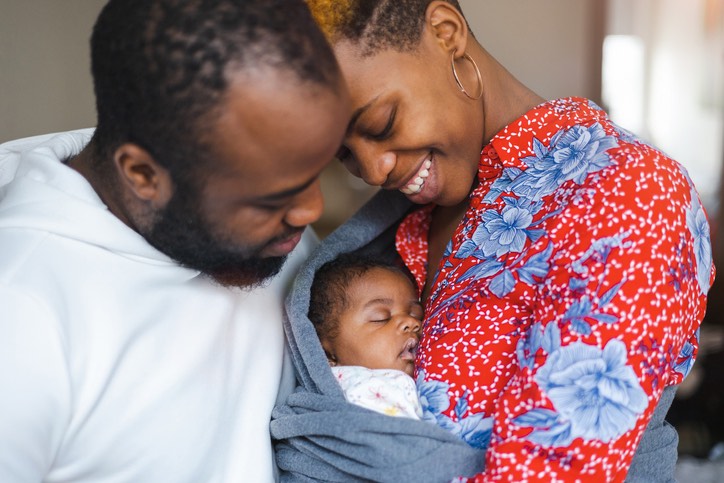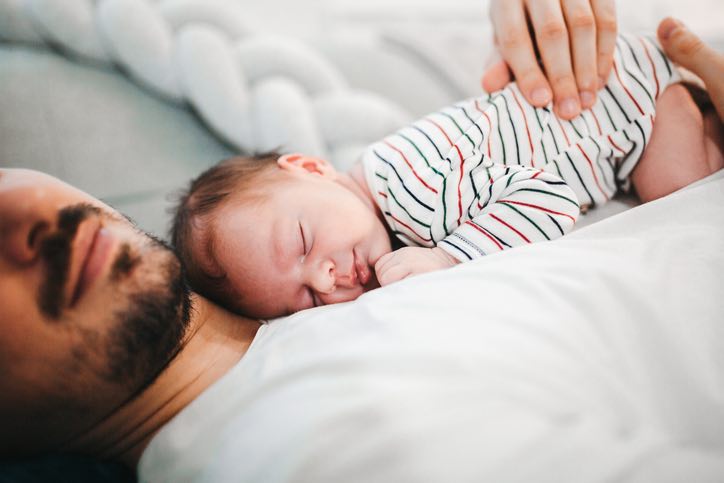Understanding the Importance of a Secure Attachment Style

Attachment, in its rawest form, is an emotional bond with another person. The concept of attachment isn’t new to the parenting world, yet it does hold various definitions and applies differently depending on the word that comes next. Attachment theory, Attachment style, and attachment parenting are a few topics that we’ll be discussing, in the hope that as a parent, you’ll walk away with the knowledge to ensure that you’re developing a secure attachment style between yourself and your children, and even in your adult relationships.
What is Attachment Theory?

Attachment theory, from a psychological perspective, proposes that humans are born with a need to form a close emotional bond with a primary attachment figure and demonstrates how the early caregiver-child relationship influences ongoing social and emotional development, self-regulation, and brain development.
Research on attachment dates back to the 1950s. Harry Harlow, a psychologist, who studied attachment, conducted an experiment whereby newborn rhesus monkeys were separated from their mothers and given two surrogates. One surrogate, made from wire, provided milk and the other was constructed of cloth, yet didn’t dispense milk. Findings showed that the monkeys preferred the cloth surrogate, suggesting that nourishment alone didn’t define the infant-caregiver attachment.
Psychologists Mary Ainsworth and John Bowlby further pioneered research on attachment. John Bowlby’s monotropic theory proposed that attachment behaviors were important to a child’s survival, integrating an evolutionary perspective on attachment. He further suggested that the primary caregiver serves as a template for future relationships. These templates, known as internal working models include how a child perceives, integrates, and responds to the caregiver. These models then serve as a how-to guide for future interpersonal relationships and how the child understands the outside world.
Mary Ainsworth was most notably known for an experiment named the Strange Situation. During this procedure, the mother was asked to leave the room, leaving her infant alone with a stranger. Minutes later, the mother was asked to return. How the baby responded to their mother’s return was critical in determining their attachment style. Ainsworth identified three attachment styles: secure attachment, and two insecure attachment styles including avoidant attachment and resistant/ambivalent attachment. A fourth insecure attachment style, known as disorganized attachment style, has since been added.
Defining Attachment Styles
Let’s dive into each of these types of attachment styles in more detail.
- Secure attachment is the healthiest style of attachment, whereby a child feels comforted by, and feels confident seeking comfort from, their caregiver. Children with a secure attachment style prefer their caregiver over strangers and grow up with a sense of stability. Into adulthood, secure attachment correlates to higher self-esteem and healthy, secure close relationships.

- Children with avoidant attachment are observed to avoid their caregiver and when distressed, don’t seek their attachment figure for comfort. Parents of children with an avoidant attachment style are inconsistent in their emotional responsiveness. Into adulthood, an avoidant attachment style correlates with independence and a preference for others who are physically and emotionally independent, due to the subject's emotional needs.
- The resistant/ambivalent attachment is also known as anxious attachment. Children with an anxious attachment style show clingy and dependent behaviors toward their caregiver, yet also exhibit rejecting behaviors when the primary caregiver attempts to connect. Into adulthood, anxious attachment can correlate with low self-esteem, over-dependence in relationships, and difficulty trusting others.
- The disorganized attachment style is characterized by uneasiness and confusion toward the caregiver, whereby a child feels both fearful and soothed by the primary attachment figure. In adulthood, this attachment style is correlated with a lack of trust, a fear that loved ones will hurt or abandon them, and difficulties regulating emotions.
The four attachment styles discussed here very briefly address the correlation between early childhood attachment and adult development. While John Bowlby proposed an internal working model using the primary caregiver as the template for later relationships, research suggests that 30 percent of people undergo changes in their attachment style, therefore attachment templates have the capacity to be revised and reshaped.
Before we observe if your attachment style is helping or hindering your relationship with your child, let’s take a deeper dive into attachment parenting.
Attachment Parenting

Attachment parenting is a parenting philosophy coined by William Sears that encourages a strong attachment between infant and caregiver through seven practices that promote closeness. These practices include:
1) birth bonding,
2) breastfeeding,
3) baby-wearing,
4) co-sleeping,
5) responding to the baby’s cry,
6) balance and boundaries,
7) trusting parental instincts.
While these practices have benefits, there’s no evidence to suggest that attachment parenting is predictive of a secure attachment style.
Now that you have a foundational understanding of attachment theory and the four attachment styles, let’s put these concepts into practice. First, we need to identify your attachment style. Attachment begins to form in early childhood, therefore taking an introspective look into early childhood interactions can help conceptualize your attachment style.
Start by asking yourself the following questions about your childhood experiences,
1. How did my caregiver(s) respond to my needs and emotions? Did they respond with a nurturing attitude or did they dismiss my needs? And how did I personally respond to my caregiver?
2. Did I trust my caregiver(s) to keep me safe? Or did I feel responsible for my caregiver(s) or was I subject to parent-child role reversal?
3. How would I characterize the personality of my caregiver(s)? Would I describe them as overbearing and worrisome? Did they push me to be independent? Were they consistent, unpredictable, or absent?
While identifying your attachment style is a beneficial first step, I recommend that your exploration continues beyond these questions and this article. The goal here is to observe how your patterns of attachment and interaction align (or misalign) with a secure or insecure attachment style.
The next step is to observe how your attachment style can influence your interactions with your child. Whether you find yourself aligned with a secure or insecure attachment style, or have young children or teens, the following behaviors can help you answer the following question: is my attachment style helping or hindering my child?
How to Develop a Secure Attachment Style With Your Child

1. Attunement: This is about our capacity as caregivers to harmonize with our child and cue into our child’s needs. It’s about observing and recognizing what our child is communicating both physically and emotionally and then responding to that need. Dr. Dan Siegel, a clinical professor of psychiatry at the UCLA School of Medicine, states that “children need attunement to feel secure and to develop well, and throughout our lives, we need attunement to feel close and connected. When we attune to our child, we are intentional with our observations and our responses.”
Here are a few questions to ask yourself: how attuned am I to my child? How does their temperament communicate what they need? When I observe a behavior and respond, does this seem to be helpful from the perspective of my child? Be sure to look at patterns over time versus isolated interactions.
2. Responsiveness: This piece aligns with attunement and focuses more on how we respond to the information in front of us; it’s where emotionality meets action. Ask yourself, how do I react toward my child? Is my emotional response soothing and supportive or overwhelming and distressing?
Emotional regulation and attachment are correlated. Generally speaking, individuals who can integrate both positive and negative emotions are securely attached, whereas those who experience difficulties accepting negative emotions are oftentimes insecurely attached. If you find yourself overreacting or underreacting, it’s an opportunity to check in with yourself. Take time to observe what’s coming up for you and what could be influencing your emotional response at this moment.
3. Dependence or Independence: This is impacted by how a caregiver can create healthy boundaries with their child and separate in ways that are developmentally appropriate to the child’s age. Start by asking yourself, am I fostering an environment that supports my child to become independent? Am I quick to jump in and ‘fix’ situations that arise or do I provide the space for my child to problem-solve and make choices on their own?
Hilary Jacobs Hendel, an attachment-based psychotherapist and author of It’s Not Always Depression (2018), states that those with insecure attachment styles need more reassurance, feel rejected when their child looks for independence and can become over-involved in the lives of their children. If the thought of your child separating stirs up discomfort or affects your own emotions negatively, take time to sit with your uneasiness. When we take time to tune in, we can recognize that separation is healthy and is essential in providing a secure base for any relationship.
4. Trust and Safety: These are at the heart of attachment. When safety and trust are created with primary attachment figures, this provides a blueprint for how the world is viewed and experienced. When children grow up in unsafe environments, this disrupts their sense of safety and can shape an overarching perception: ‘others cannot be trusted to keep me safe.’
Ask yourself, were there moments in my own childhood and upbringing that made me feel unsafe or untrusting, and how did this impact my view of other people and the world around me? How do these experiences impact my parenting? How does my own mental health and well-being impact my parenting?
Attachment is a human need; we all desire to connect and bond. It shapes our intimate relationships with romantic partners as well as our relationships with our children. While our early attachment blueprints provide valuable information, it’s important to keep in mind that our attachment style, and how we parent, can change with each new relationship, interaction, and experience.
---
Christina Trujillo Sieren, is an author, speaker, and mom of two. Christina is a licensed psychotherapist with a private practice specializing in high-risk adolescents and families. Her focus is on helping people choose their “edge” and embrace the unknown that lies ahead. She is the Founder and Lead Coach of Unapparent Parenting, INC., where she provides coaching to parents of teens. Christina supports parents to question mainstream parenting concepts and embrace the messiest of moments, daring parents to redefine their most authentic parenting blueprint from the inside out. Christina is the author of Parenting Teen Girls: A Positive Parenting Approach to Raising Health, Independent Daughters. For more information and to connect with Christina, visit www.christinasieren.com.